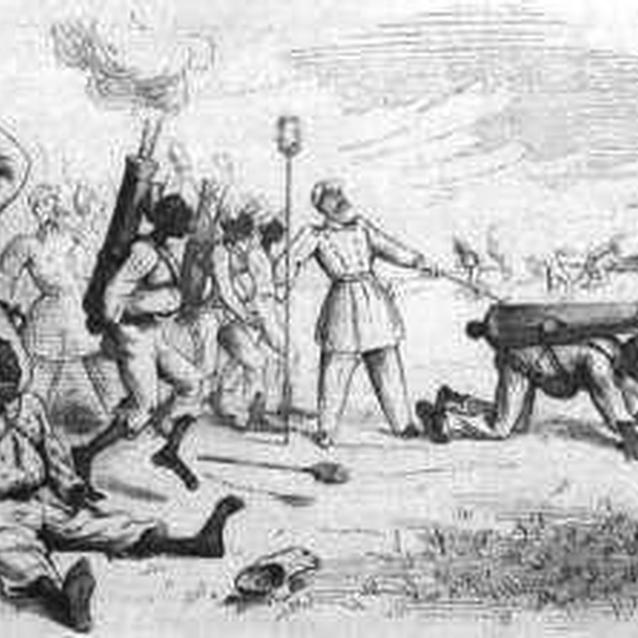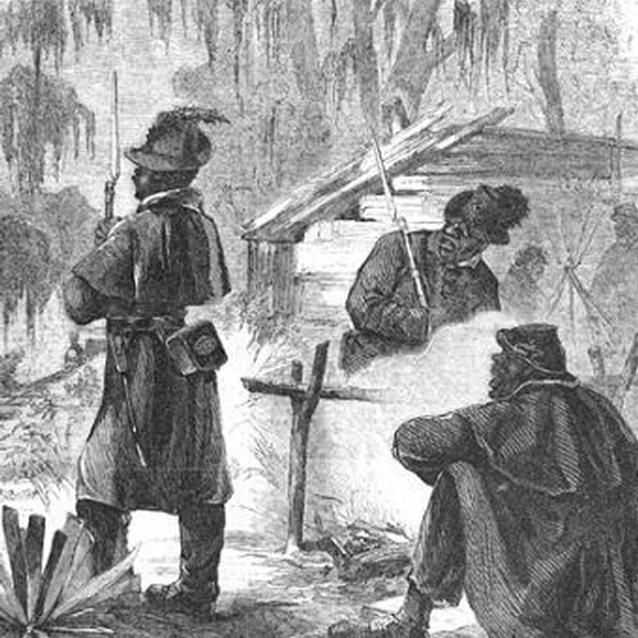The Civil War evolved into a proving ground for African Americans by allowing them to serve in the United States military. Black soldiers had fought in earlier wars including the American Revolution and the War of 1812, but fading memories and public prejudice dimmed acceptance for allowing African Americans to serve in the U.S. Army during the Civil War.
The charge by the 1st and 3rd Regiments of Louisiana Native Guards at Port Hudson, Louisiana helped open the eyes of white critics to the value and valor of black soldiers

Library of Congress
In time, troop shortages, conduct of the war, and public debate opened opportunities for freemen of color and former slaves to join northern militia regiments. Whether as an enlisted man in the Kansas Colored Cavalry, the Louisiana Native Guard, United States Colored Troops or the 54th Massachusetts Infantry, each soldier learned similar military skills, used similar equipment, and experienced similar hardships in the field.
These freemen and former slaves could have avoided the danger, fear, and the discomfort of being a soldier. There were many detractors who, with great disdain, stated that black soldiers simply could not grasp the military discipline needed to fight in battle. White northern troops were sure that African American soldiers would not stand in a fight, leaving their own flanks exposed to enemy fire.
Despite discouragement, thousands of black men did enlist in the Union army, including what would become Ship Island's 2nd Regiment of Louisiana Native Guards. Like all soldiers, these men fought not just the dangers of the battlefield, but also the hazards of disease and confinement in camp. Many people today are surprised to learn that more soldiers on both sides died in camp from disease than from bullets on the battlefield.
When speaking of African American regiments in the Civil War, most individuals would probably think of the 54th Massachusetts Infantry regiment. Yet it is important to mention that the 54th Massachusetts, celebrated for its valiant charge at Fort Wagner, South Carolina, was not the first African American unit to fight in the Union army. While the 54th Massachusetts was organized and mustered into service in 1863, other units of African American soldiers were formed in Kansas, South Carolina and Louisiana as early as 1862.
For the black soldier, being given inferior equipment and pay were common experiences. In most cases, the highest rank an African American could achieve was that of Sergeant-Major. Yet white troops often questioned or resisted orders from these non-commissioned officers. Rather than trust the fighting capabilities of what were deemed untested regiments, white generals often sent African American troops not into battle; but to dig earthworks, or garrison remote outposts such as Ship Island, Mississippi.

Library of Congress
The charge by the 1st and 3rd Regiments of Louisiana Native Guards at Port Hudson, Louisiana helped open the eyes of white critics to the value and valor of black soldiers. The 1,000 men engaged at Port Hudson in May of 1863 may, in fact, have been the first black troops to experience a battle of any size in the American Civil War.
Prior to the engagement at Port Hudson there were earlier skirmishes where black troops performed well, but news was slow to reach the public. Even the reports from Port Hudson itself reached newspapers long after the fact, and were often inaccurately based on accounts by persons who were not present at the actual charge.
Despite losses of men and officers under horrific cannon and rifle fire, the Native Guards made a determined charge against fixed and well-armed Confederate positions. Their commanding general, Nathaniel P. Banks, no enthusiast for African American troops, stated their conduct was "in many respects...heroic."
The charge at Port Hudson was unsuccessful, but it was a beginning. Further skirmishes and battles improved confidence in black troops by the northern public and Union officers.
Ship Island's 2nd Regiment of Louisiana Native Guard had earlier attracted attention concerning the quality of black soldiers. On April 9, 1863, the 2nd Regiment of Louisiana Native Guard successfully performed a raid, sailing from Ship Island to Pascagoula, Mississippi. The unit's fight against Confederate infantry and cavalry, followed by an organized withdrawal under fire, sparked attention in both New Orleans and in the North. It seemed African American soldiers could, in fact, accept military discipline and fight for a cause.
In time over 180,000 African Americans served in 163 units during the Civil War. African American soldiers had so proven their worth that, instead of disbanding all of these units in 1865, a number of regiments were reorganized into regular units of the United States Army. This includes the 25th United States Infantry, which departed Ship Island in 1870 for San Antonio, Texas.
Through the latter 19th century, the 25th U.S. Infantry was recognized as one of four "Buffalo Soldier" regiments which achieved fame for protecting settlers, communities and telegraph lines along the Western frontier. Until integration of the United States military in 1948, African American soldiers continued to serve the country in segregated units of the United States Army through the Spanish-American War, World War I and World War II.
Last updated: August 14, 2017
